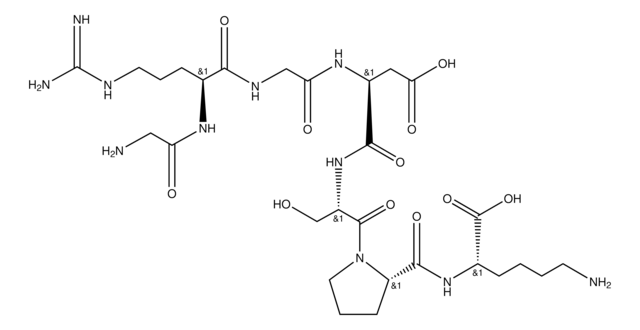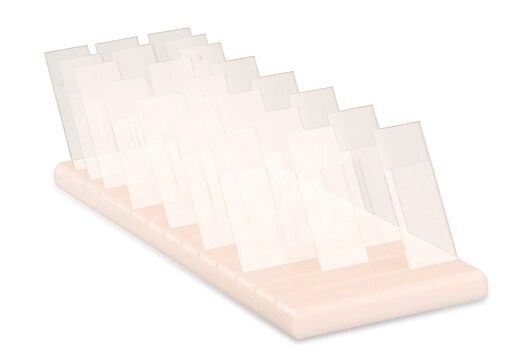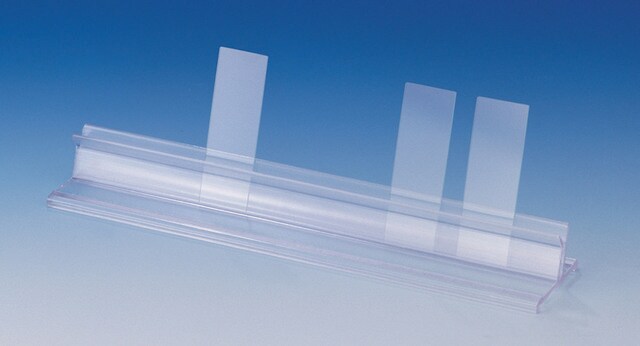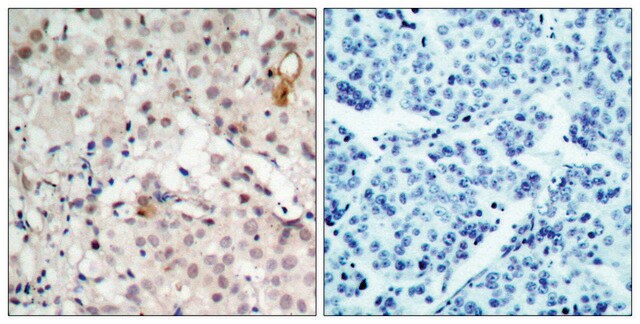MABT403
Anti-Proteinase 3/PR3 Antibody, clone MCPR3-7
clone MCPR3-7, from mouse
Synonyme(s) :
Myeloblastin, AGP7, C-ANCA antigen, Leukocyte proteinase 3, Neutrophil proteinase 4, NP-4, P29, PR-3, PR3, Wegener autoantigen
About This Item
Produits recommandés
Source biologique
mouse
Niveau de qualité
Forme d'anticorps
purified immunoglobulin
Type de produit anticorps
primary antibodies
Clone
MCPR3-7, monoclonal
Espèces réactives
human
Ne doit pas réagir avec
mouse
Technique(s)
affinity binding assay: suitable
flow cytometry: suitable
immunoprecipitation (IP): suitable
western blot: suitable
Isotype
IgG1κ
Numéro d'accès NCBI
Numéro d'accès UniProt
Conditions d'expédition
dry ice
Modification post-traductionnelle de la cible
unmodified
Informations sur le gène
human ... PRTN3(5657)
Description générale
Spécificité
Immunogène
Application
Cell Structure
Inflammation & Autoimmune Mechanisms
Flow Cytometry Analysis: A representative lot immunostained the surface of only a small subpopulation of human peripheral blood neutrophils that are stained positive with clone MCPR3-2 (Cat. No. MABT340), consistent with the surface PR3 being in an active conformation complexed with CD177 and/or lipid bilayers. (Hinkofer, L.C., et al. (2013). J. Biol. Chem. 288(37):26635-26648).
Flow Cytometry Analysis: A representative lot bound recombinant human PR3-, but not murine PR3-, coated Talon-beads as determined by FACS analysis. (Silva, F., et al. (2010). J. Autoimmun. 35(4) 299-308).
Flow Cytometry Analysis: A representative lot bound immobilized recombinant human PR3 via a distinct epitope than those recognized by clone MCPR3-2 and MCPR3-3 (Cat. No. MABT340 and MABF973, respectively) as determined by FACS analysis of bead-based competition binding assay (Silva, F., et al. (2010). J. Autoimmun. 35(4) 299-308).
Immunoprecipitation Analysis: A representative lot immunoprecipitated a recombinant human PR3 construct proP-PR3ctp that adopts a pro-PR3 conformation, while exhibiting greater than 75% reduced affinity toward a recombinant construct ΔPR3ctp-S195A that adopts a mature PR3 conformation (Hinkofer, L.C., et al. (2013). J. Biol. Chem. 288(37):26635-26648).
Inhibition Analysis: A representative lot caused a substrate-dependent inhibition against human PR3 enzymatic activity by altering PR3 S1′ pocket conformation, but not PR3 S1 pocket conformation (Hinkofer, L.C., et al. (2013). J. Biol. Chem. 288(37):26635-26648).
Affinity Binding Assay: A representative lot captured a recombinant human PR3 construct proP-PR3ctp that adopts a pro-PR3 conformation, while exhibiting greater than 75% reduced affinity toward a recombinant construct ΔPR3ctp-S195A that adopts a mature PR3 conformation (Hinkofer, L.C., et al. (2013). J. Biol. Chem. 288(37):26635-26648).
Qualité
Isotyping Analysis: The identity of this monoclonal antibody is confirmed by isotyping test to be IgG1κ.
Description de la cible
Forme physique
Stockage et stabilité
Handling Recommendations: Upon receipt and prior to removing the cap, centrifuge the vial and gently mix the solution. Aliquot into microcentrifuge tubes and store at -20°C. Avoid repeated freeze/thaw cycles, which may damage IgG and affect product performance.
Autres remarques
Clause de non-responsabilité
Vous ne trouvez pas le bon produit ?
Essayez notre Outil de sélection de produits.
Code de la classe de stockage
12 - Non Combustible Liquids
Classe de danger pour l'eau (WGK)
WGK 2
Point d'éclair (°F)
Not applicable
Point d'éclair (°C)
Not applicable
Certificats d'analyse (COA)
Recherchez un Certificats d'analyse (COA) en saisissant le numéro de lot du produit. Les numéros de lot figurent sur l'étiquette du produit après les mots "Lot" ou "Batch".
Déjà en possession de ce produit ?
Retrouvez la documentation relative aux produits que vous avez récemment achetés dans la Bibliothèque de documents.
Notre équipe de scientifiques dispose d'une expérience dans tous les secteurs de la recherche, notamment en sciences de la vie, science des matériaux, synthèse chimique, chromatographie, analyse et dans de nombreux autres domaines..
Contacter notre Service technique







